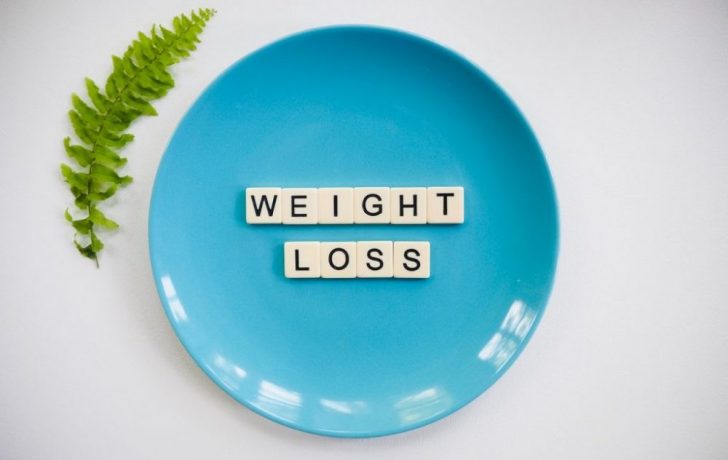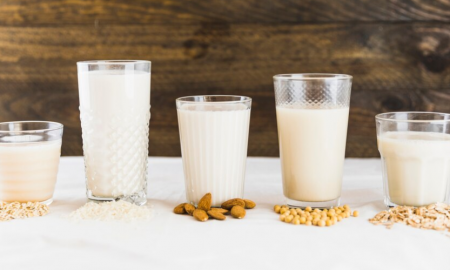
How To Start Counting Macros For Weight Loss?

In the world of weight loss, there are TONS of diet plans out there. Some work. Some don’t. You can count calories. Or points. Or carbs. Or you can track one of the most countable elements: macros. Macros or “flexible dieting” is all the rage, but is it a proven method of healthy living? Here’s all you need to know about macro dieting.
While many foods contain all of the main macronutrients, such as carbohydrates, fats and protein, most foods skew heavily toward one or two of them. For instance, meat is loaded with protein, bread is mostly carbohydrates, and olive oil is predominantly fat. Your body needs all three in some capacity to perform its daily functions.

ROMAN ODINTSOV/ Pexels | A macrobiotic diet is a fad diet based on ideas about types of food drawn from Zen Buddhism
According to the macro diet, you can lose weight by setting a goal for exactly how many grams of protein, carbohydrates, and fat to eat per day. Again, unlike most traditional diets, you don’t have to count calories, and unlike low-carb or low-fat diets, you don’t need to eliminate your favorite foods, like potatoes, pasta, or bacon.
Although a macro diet primarily focuses on counting macronutrients, it also involves staying within a specific calorie range. A person will calculate their daily calorie needs and determine their macros accordingly. Some people count their macros to reach weight loss goals, build muscle mass, and balance blood sugar levels. However, many people may find it time-consuming, socially restrictive, and confusing.

Total Shape/ Pexels |
The most important steps in counting macros are setting a calorie goal and macronutrient range for carbs, protein and fat
Before you can start tracking, you’ll need to determine your daily macronutrient goals. These four steps guide you through that process.
Step 1: Determine your energy needs and daily calorie goals
While calories aren’t the primary focus of the macro diet, they do provide a framework for macros. So you have to start by determining your body’s daily calorie needs and then setting a calorie goal.
Step 2: Create a calorie goal
Once you have those figures, you need to come up with a target calorie intake to meet your weight goals. To lose weight, you need the number of calories you consume to be 10 to 15 percent below what you’re burning every day.

Ella Olsson/ Pexels | When you’re counting your macros, you’re counting the grams of proteins, carbs or fat that you’re consuming
Step 3: Make a plan
After determining the total number of calories you should eat per day, you’ll have to figure out how many of your daily calories should come from fat, carbs, and protein. Some sites and blogs advocate for a strict 40 percent protein, 40 percent carbohydrate, and 20 percent fat split.
Step 4: measure everything as you progress forward
The more accurately you’re able to track, the better. Usually, this means measuring everything while you’re getting started. Measuring cups and spoons will help you learn the macros in portion sizes of different foods. A food scale can be helpful, too. After a while, you’ll probably get good at eyeballing your favorite foods to log portion size into your tracking app and not have to measure as much.
More inMedicare
-
`
How Often Should You Clean Your Yoga Mat? The Complete Guide
Cleaning your yoga mat might not always be top of mind, but it’s essential for your health and well-being. Whether you’re...
February 6, 2025 -
`
7 Common Blood Pressure Mistakes to Avoid for Accurate Readings
Managing your blood pressure is crucial for maintaining heart health, but many people unknowingly make mistakes when measuring it at home....
January 31, 2025 -
`
Types of Milk and Their Health Benefits – A Complete Guide
Milk has long been a staple in many households. Whether it’s poured over cereal, added to coffee, or simply enjoyed on...
January 25, 2025 -
`
Why the Keto Diet Is Not As Healthy As You Assume It to Be
The ketogenic (keto) diet is everywhere, touted as a game-changing plan for fast and effective weight loss. But is keto healthy?...
January 15, 2025 -
`
Are Press-On Nails Worth the Hype?
Getting the perfect manicure often requires a hefty investment of both time and money. However, if you’re looking to achieve a...
January 3, 2025 -
`
How Intense Exercise and Appetite Are Surprisingly Linked
Balancing physical activity and hunger can be challenging, especially when maintaining a healthy lifestyle or managing weight. Exercise is known to...
December 26, 2024 -
`
Our Brain: The Link Between Learning and Mindset
The brain is a complex organ that governs bodily functions but also shapes how we think and act. This interplay raises...
December 18, 2024 -
`
The Top 5 Benefits of Getting a Flu Shot
Getting a flu shot is more than skipping the sniffles. It protects your health in a big way. The flu vaccine...
December 13, 2024 -
`
How to Maximize Electronic Bike Health Benefits While Staying Safe
Electronic bikes, or e-bikes, offer an innovative way to enhance fitness while reducing the strain of traditional cycling. The health benefits...
December 6, 2024















You must be logged in to post a comment Login